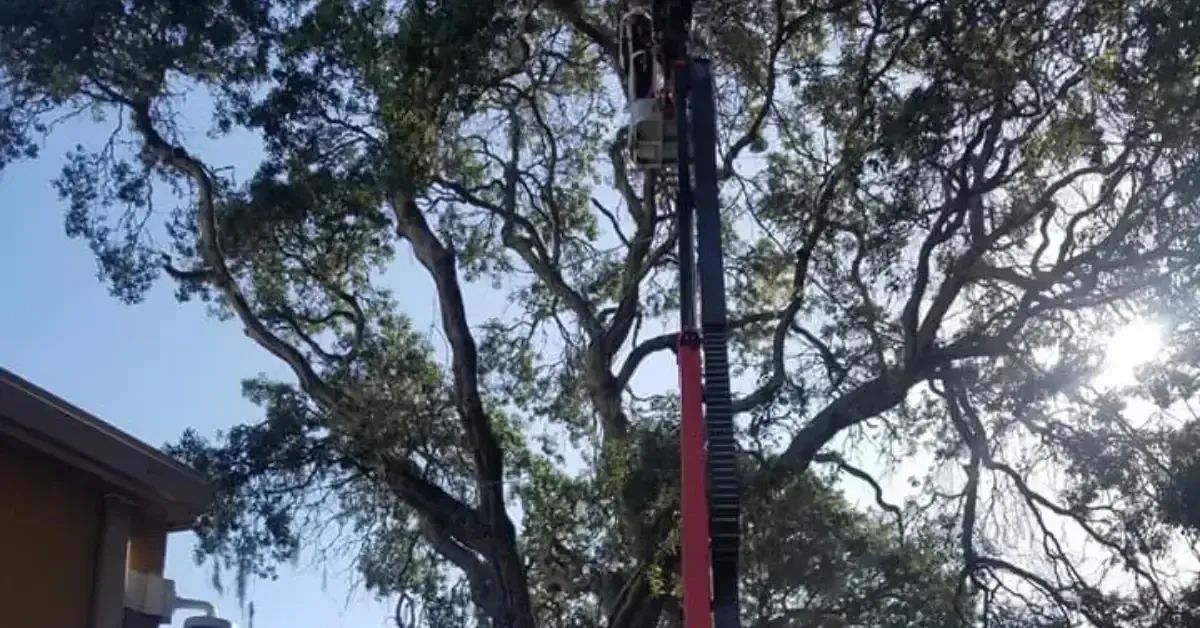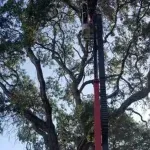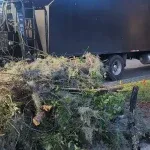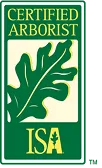
November 7, 2025
Trees provide shade, beauty, and ecological benefits, but they can also pose serious hazards if they become structurally unsound or diseased. A compromised tree can threaten property, utility lines, vehicles, and most importantly, human safety. According to the International Society of Arboriculture (ISA), thousands of tree-related accidents occur each year, many of which could have been prevented with proactive inspection and maintenance.
Recognizing the early warning signs of a dangerous tree is essential for homeowners, property managers, and businesses. This guide outlines 10 key indicators that your tree may be at risk of failure, why each sign matters, and when to call a qualified tree service for professional evaluation.
1. Visible Cracks or Splits in the Trunk
Deep cracks or vertical splits in a tree’s trunk are among the most obvious red flags. These structural failures often indicate that the tree’s internal strength is compromised.
- Why it matters: Cracks weaken the tree’s ability to support its own weight, especially during storms or high winds.
- What to look for: Large fissures, bark peeling away, or open cavities at the base of the trunk.
- Action: Trees with major trunk cracks should be inspected immediately by a tree care professional. In some cases, bracing or cabling may help, but removal is often the safest option.
2. Significant Leaning
While some trees naturally grow at an angle, a sudden or pronounced lean often signals danger.
- Why it matters: A leaning tree may indicate root failure or unstable soil conditions. Trees leaning more than 15 degrees from vertical are particularly hazardous.
- What to look for: A lean that appears to be increasing over time, soil heaving on one side, or exposed roots on the opposite side.
- Action: Do not ignore a leaning tree, especially if it is near a structure or high-traffic area. Immediate professional assessment is critical.
3. Dead or Hanging Branches
Dead branches, especially those high in the canopy, pose a significant falling hazard. Arborists often call these “widowmakers” because of the danger they present.
- Why it matters: Even small dead branches can fall unexpectedly, injuring people or damaging property.
- What to look for: Branches without leaves during growing season, brittle twigs, or branches that snap easily.
- Action: Deadwood should be pruned promptly to reduce risk. If a large portion of the crown is dead, the entire tree may be declining and removal might be necessary.
4. Root Damage or Decay
The root system is the foundation of tree stability. Damage to roots, whether from construction, soil compaction, or decay, can fatally undermine a tree’s ability to stand upright.
- Why it matters: Root damage often goes unnoticed until the tree begins to lean or collapses without warning.
- What to look for: Exposed roots that appear soft, crumbly, or hollow; fungal growth around the base; or evidence of heavy soil disturbance.
- Action: Avoid cutting or compacting soil near tree roots. If damage has already occurred, seek professional evaluation to determine if the tree can be stabilized.
5. Fungal Growth on the Trunk or Base
The presence of mushrooms, conks, or fungal bodies near the base of a tree is often a sign of internal decay.
- Why it matters: Fungi feed on decaying wood, meaning the tree’s structural integrity is compromised from within.
- What to look for: Shelf-like fungal growth, discolored bark, or soft, spongy wood at the base.
- Action: A tree with visible fungal colonization should be carefully assessed. In many cases, removal is the safest course of action to prevent sudden collapse.
6. Cavities or Hollow Areas in the Trunk
Hollow trees can sometimes survive for years, but large cavities usually indicate significant decay.
- Why it matters: A hollow trunk reduces the tree’s ability to withstand wind and snow loads, increasing the risk of breakage.
- What to look for: Open cavities, missing bark, or signs that wildlife has nested inside decayed sections.
- Action: An arborist can perform a risk assessment using specialized tools to measure remaining wood strength.
7. Excessive Deadwood in the Canopy
While occasional dead branches are natural, an abundance of deadwood signals that the tree is declining.
- Why it matters: Progressive canopy dieback is often linked to disease, root stress, or age-related decline.
- What to look for: Large sections of bare limbs, lack of new leaf growth, or thinning foliage at the crown.
- Action: Depending on severity, pruning may extend the tree’s life. However, widespread canopy death typically means the tree is nearing the end of its lifespan.
8. Signs of Pest Infestation
Insects and borers can severely weaken trees, often by attacking wood, roots, or leaves.
- Why it matters: Pests accelerate decline and can spread disease to other nearby trees.
- What to look for: Small exit holes in bark, sawdust-like material (frass), oozing sap, or unusual leaf discoloration.
- Common culprits: Emerald ash borer, pine beetles, and carpenter ants.
- Action: Early detection is vital. Some infestations can be managed with treatment, but advanced damage often requires removal.
9. Poor Branch Unions or Multiple Trunks
Trees with multiple trunks (codominant stems) or weak branch attachments are structurally vulnerable.
- Why it matters: Poor unions are prone to splitting under stress, leading to major branch failure.
- What to look for: V-shaped unions, cracks at the attachment point, or bark trapped between stems (including bark).
- Action: Professional cabling or pruning can sometimes mitigate risks, but severe cases may warrant removal.
10. Proximity to Power Lines or Structures
Even a healthy tree can become dangerous if it grows too close to power lines, roofs, or other structures.
- Why it matters: Branches in contact with power lines pose a serious fire and electrocution hazard. Proximity to buildings increases the risk of storm damage.
- What to look for: Branches touching or overhanging utility lines, limbs scraping against roofs, or encroachment on sidewalks and driveways.
- Action: Only qualified professionals should trim trees near power lines. Homeowners should never attempt this work themselves.
When to Call an Arborist
If you notice one or more of these warning signs, schedule an inspection with a qualified arborist. Professional tree risk assessments include:
- Visual inspections of trunk, canopy, and root flare
- Sounding tests to detect hollows or decay
- Resistograph or tomography scans for internal structural analysis
- Soil and root evaluations for stability
Prompt action not only prevents costly property damage but also ensures the safety of family, neighbors, and the community.
Preventive Tree Care to Reduce Risks
The best way to avoid hazardous tree situations is through consistent preventive care. Key practices include:
- Regular pruning to remove deadwood and improve structure
- Mulching to retain soil moisture and reduce compaction
- Proper watering and fertilization to support tree health
- Monitoring for pests and diseases before they spread
- Avoiding root damage during construction or landscaping
Healthy trees are far less likely to become dangerous. Investing in routine maintenance pays dividends in both safety and long-term tree vitality.
FAQs About Dangerous Trees
How do I know if my tree is dangerous?
Look for signs such as leaning, cracks in the trunk, dead or hanging branches, root damage, fungal growth, or pest infestations. If you see more than one of these issues, call an arborist for evaluation.
Can a leaning tree be saved?
In some cases, young trees with mild leaning can be corrected with proper staking and care. However, mature trees with severe lean are often unstable and require professional assessment or removal.
Is fungus on a tree always a bad sign?
Yes, visible fungus usually indicates internal decay. The extent of damage depends on how deep the fungus has penetrated. Arborists can assess whether removal is necessary.
When should I remove a tree near my house?
If the tree shows structural weakness, disease, or excessive leaning toward your home, removal may be necessary. Trees that grow into power lines should also be evaluated promptly.
How often should trees be inspected?
Most experts recommend inspecting trees at least once a year, preferably before storm season. Trees with known issues may require more frequent monitoring.
Final Thoughts and Safety Takeaways
Trees enrich our landscapes, but when structural problems, disease, or root damage take hold, they can become dangerous liabilities. Recognizing the warning signs, such as trunk cracks, leaning, dead branches, or fungal growth, allows homeowners and property managers to act before accidents occur.
If you suspect that a tree on your property is hazardous, do not delay. A professional evaluation from a professional arborist provides peace of mind and ensures the safety of your home and loved ones. Contact Bushor’s Tree Surgeons today for expert inspections, safe removals, and trusted tree care solutions.






